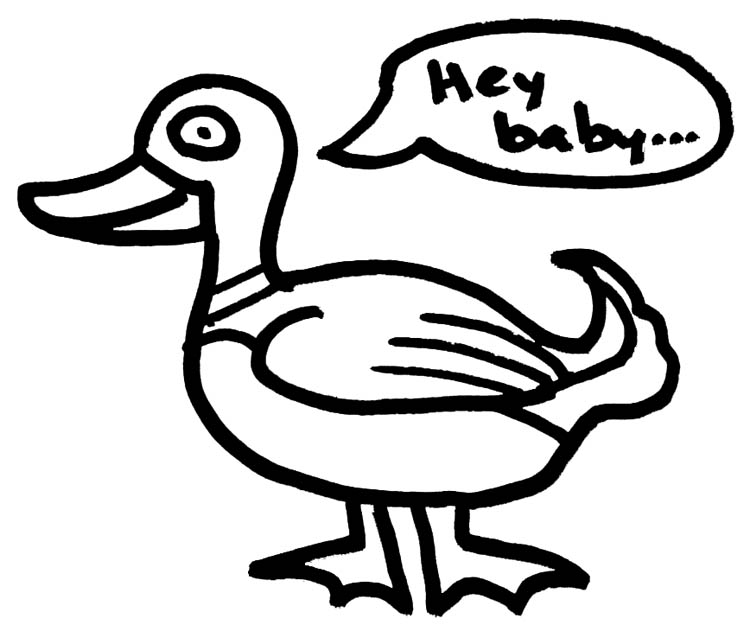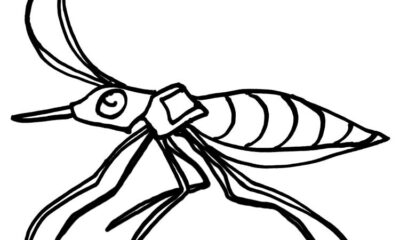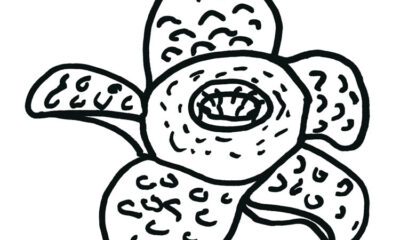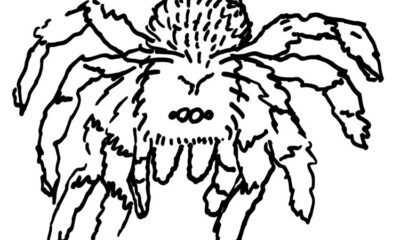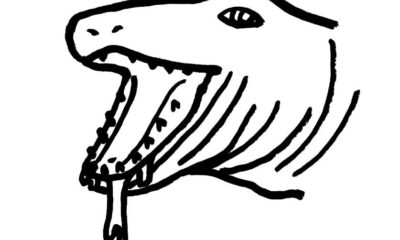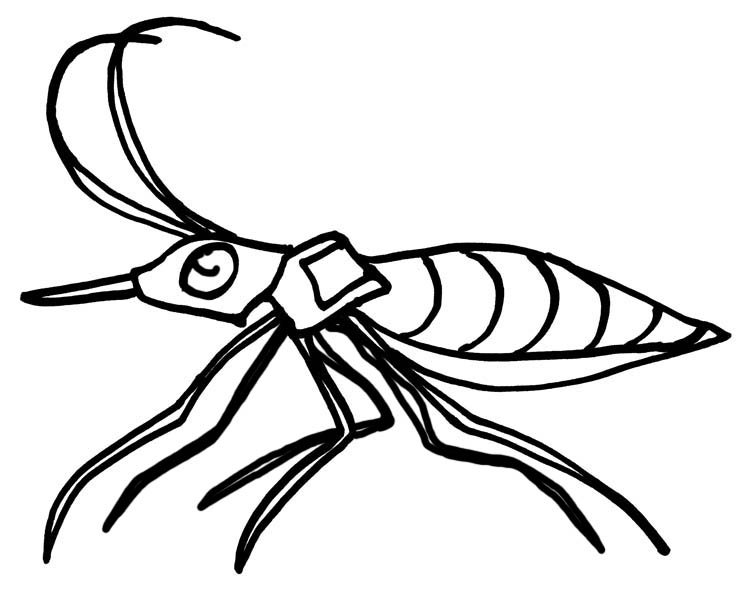
Nightmarish Nature 2: Perilous Parenting
More Videos
Published
1 year agoon
Returning to our new series on Nightmarish Nature, last time we looked at some Vampires Among Us. This time we will consider some Perilous Parenting…
Becoming Parents
I’m not going to go into reproductive habits among the natural world. Some of that is outright horrifying too, at least in terms of our human-normative perspective. Yeah, angler fish have attachment issues. Spiders & mantids are totally safe word averse, courting death as much as sex. And ducks are more than kind of rape-y. But rape is still NOT our sponsor and this isn’t intended to be an R- or X-rated segment. So instead we’re going to skip right to parenting perils…
Parenting is inherently scary for first-timers seeing as how there’s no instruction manual or anything that comes along with the new role. And now you’re responsible for a totally new little critter knowing that a lot of its mental & emotional baggage issues will start with you. It’s a huge responsibility, and some creatures have developed some fascinating strategies to deal with raising their young before sending them off in the world. (As opposed to those who just let the kids fend for themselves starting out completely on their own, that’s a different kind of horror.)
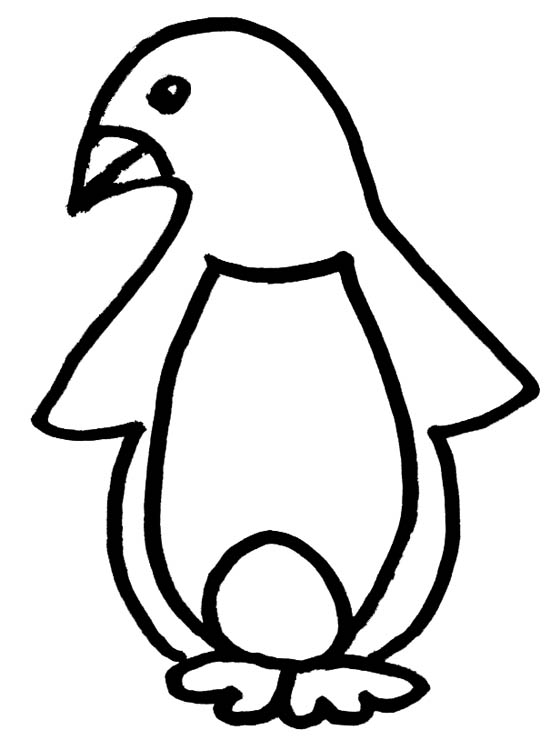
Parenting Perils
There are parents who die for their offspring, like octopus. There’s the sort of devotion that comes from sealing mom in a tree to sit on the eggs, relying solely on dad to feed her (hornbills) or from having all the dads huddle together for survival, holding their eggs on his feet to keep the babies alive during the harshest winter ever (Emporer penguins). And there’s the kind of cuteness that comes from having pouches, like kangaroos and sea horses, which are totally not the same for oh so many reasons, but both still kinda adorable in their own ways. (Remember, it’s not just moms but dads too.)
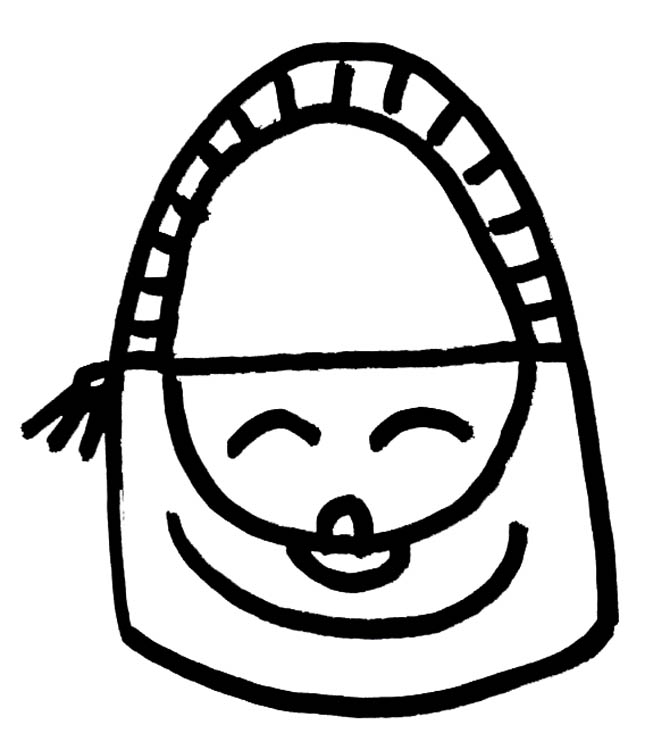
Where This Gets Horrific / Trypophobia Warning
But I think the most terrifying parenting horror stories for me are those things that trigger trypophobia or worse. Oh by the way, if you are afraid of or disgusted by clusters of slightly varied objects, you might want to sit the rest of this segment out. In fact don’t even keep reading, just go back to thinking about cute things with pouches, like good designer handbags (so hard to find these days).
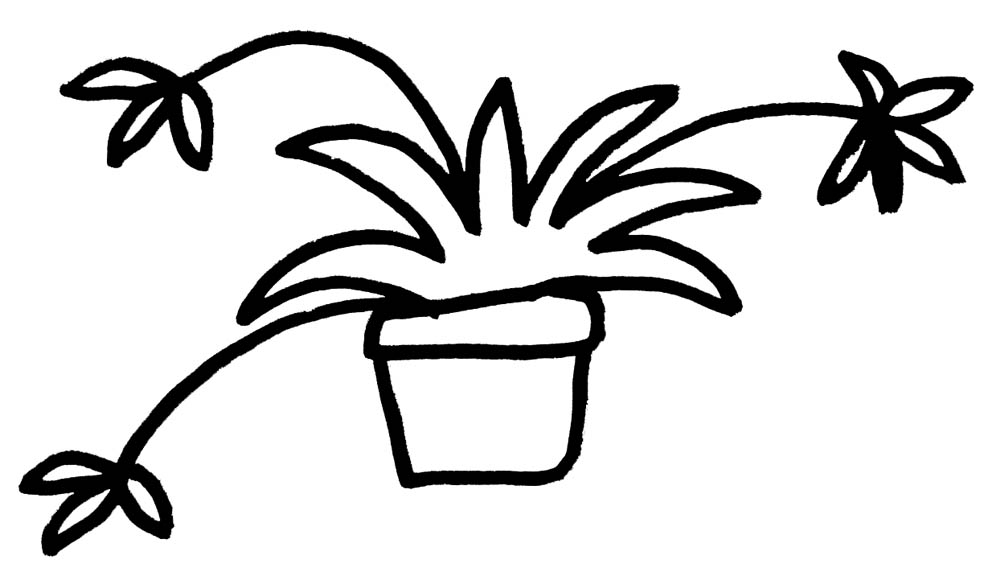
Plants
So I’m going to look at this first from the plant world. A coworker once brought in a mother-of-millions plant to work to share around, which was the first time I encountered the species. Now these aren’t your spider plants which send off little offspring on stalks to start anew a ways off. Oh no. These succulents form little tiny baby plants along the edges of their leaves that fall off and start growing beside themselves. Some make it, some don’t (competition for resources when you’re all living literally on top of each other can be harsh, but you’re obviously in a great location so why not share the bounty?) That doesn’t sound so bad until you remember the “millions” part of this. These plants can be very very VERY prolific. Think rabbits on steroids but a couple orders of magnitude on steroids, so more like bugs or fish or something. The sheer quantity of it honestly kind of creeps me out, so needless to say I did NOT adopt one of my coworker’s plants.

Bugs and Aquatic Life and Baby Central
Moving on, as mentioned, lots of bugs and water critters breed like rabbits on steroids on steroids, so they are kind of naturally prone to the whole trypophobia thing, though a lot of them are also pretty hands off. There’s those jumpy fish who let the babies swim in their mouths for safety at the slightest sign of danger, which is both creepy and cute and so a little bit spoopy in my opinion. And spiders and scorpions will carry lots and lots of tiny babies on their backs. Tiny baby spiders are also known to balloon en masse on little strands of silk to drift on the wind to new homes where they can forge their own lives, hoping to land in primo locations and not someplace uninhabitable. (Please oh please let me drift to the penthouse suite and not the dump…)
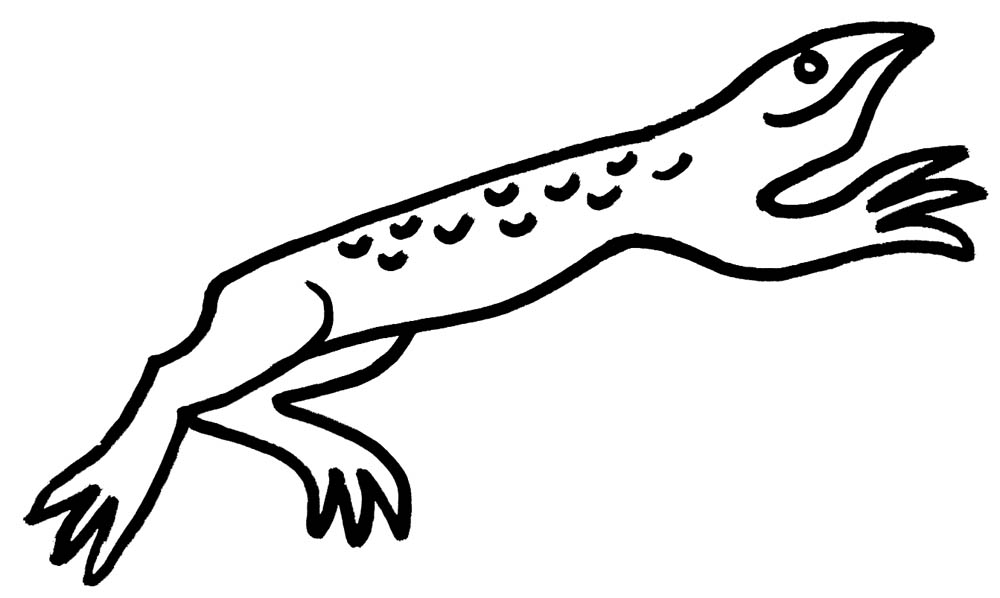
Surinam Toads
But the one that really takes the cake in my book is the surinam toad. They’re kind of weirdly flat creepy looking creatures in all the good, bad, ugly categories to start with. You know, perfectly suited to being mistaken for leaves in the mud by both predators and food. But their parenting style gets even weirder than their physical appearance. So, the male toad will entice a female to mate with him and then shovel their fertilized eggs on to mom’s back to be absorbed into her skin when it grows around them, kind of like bubble wrap. And then, when the time is right, the true horror begins…

Surprise! They all pop out, with all of the babies literally erupting from little tiny holes in mom’s flesh. Let that sink in a minute. I’ll repeat in greater detail in case you weren’t listening. Mom develops the fertilized eggs under her skin in these little pockets on her back through all beginning life stages, from hatchlings to tadpoles to fully formed froglets, until it’s time two to three months later, when she births LOTS of little baby toads. The tiny toads literally erupt from beneath mom’s skin to swim to the surface and fend for themselves. She then molts and starts the cycle anew.
Just, no, I can’t even… So that’s it, I’m done for now. I’ll leave you with that image burned into your psyche as your last impression of this segment of Nightmarish Nature. Until next time…
Related posts:
- Nightmarish Nature: Vampires Among Us
- Haunted MTL Original – The Eyes Have It – Victory Witherkeigh
- It Was Not Death, for I Stood Up by Emily Elizabeth Dickinson and revisited by Jennifer Weigel: Part I
- It Was Not Death, for I Stood Up by Emily Elizabeth Dickinson and revisited by Jennifer Weigel: Bonus Poetry Reading
Jennifer Weigel is a multi-disciplinary mixed media conceptual artist residing in Kansas USA. Weigel utilizes a wide range of media to convey her ideas, including assemblage, drawing, fibers, installation, jewelry, painting, performance, photography, sculpture, video and writing. You can find more of her work at: https://www.jenniferweigelart.com/ https://www.jenniferweigelprojects.com/ https://jenniferweigelwords.wordpress.com/

You may like
I thought about featuring some sort of Father Nature bit for Father’s Day, but having already explored Perilous Parenting I decided to focus on more creepy insects instead. Because we love creepy insects here at Haunted MTL. Thus, I present Assassin Fashion, featuring the Assassin Bug…
Fashion Plates
Now I don’t know about you, but my first thought after snagging my prey and slurping out their dissolved innards is that I totally want to wear the dried up husk of their now lifeless body. Like that necklace made of nothing but shrunken heads. That is some first-rate fashion right there, and no one would dare to say otherwise lest they want to become a part of the dead-flesh coat… And this is exactly what the Assassin Bug does. Like a spider, it stabs its unsuspecting prey, turns it into a giant protein shake inside of its insectoid shell-glass, sips it out, and then attaches the corpse’s carapace to its ever growing collection atop its back.
Aside from being totally badass, these nightmarish embellishments serve a number of additional functions. They help the Assassin Bug blend in among its prey, masking its own odor and helping it to appear as a mass of insects that belong in or near the nest (especially among those more social networking creepy crawlies like ants and termites). In fact, it may even draw the attention of those clean up crews seeking to bury their dead, luring them in to become part of the body snatched horde. And the horrifying additions also act as a sort of armor and potential decoy for other predators like lizards and birds, who can end up with a mouth full of dead bug bodies rather than a bite of juicy Assassin Bug.

Kissing Sucks
And Assassin Bugs don’t just carry around one or two dead bodies, they may totally pile them up, as well as use other insects’ and plants’ secretions to their own advantage. Here’s a cool video from Deep Look that shows a partnership some Assassin Bugs have with Tarweed, keeping moth caterpillars from eating all of its flowers so that it can itself reproduce and spread.
Fortunately humans are too big to be susceptible… Or are we? There are also parasitic Assassin Bugs known as Kissing Bugs or Vampire Bugs that feed on mammal’s blood at night; they even act as a vector for other parasites that can cause disease years after feeding, which are associated with Chagas disease and are transmitted to mammalian hosts when the Assassin Bug poops while feeding and the host animal smears the poop into the bite when itching it.
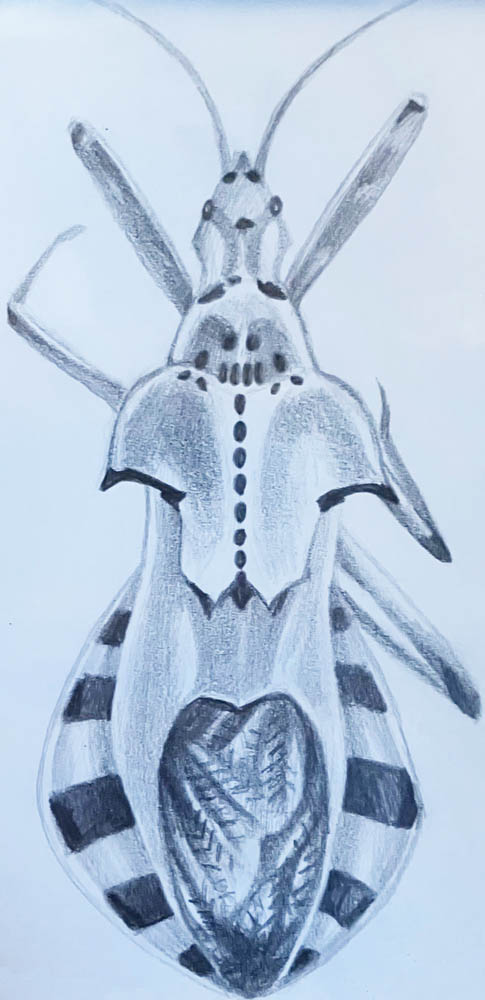
So here’s a pencil drawing I did of a dead bug I found (I had a whole series of these back in the day). I hadn’t at the time known what it was, but it turns out to be an Assassin Bug. I wonder what its fashion sense was like…
So remember, if you want to be at the forefront of creepy horrific fashion, just look to the Assassin Bug for inspiration. If you’ve enjoyed this segment of Nightmarish Nature, feel free to check out some previous here:
Original Series
Nightmarish Nature: Something Rotten, Flesh in Flowers
Published
2 months agoon
May 26, 2024
This time on Nightmarish Nature we will again explore some of the more fetid fungi and plants, this time focusing on those that imitate rotten flesh in order to attract flies. Among the best known of these are the Stinkhorn and the Corpse Lily or Corpse Flower. The Language of Flowers be damned, literally…
Fungi
Many of the fungi in the Stinkhorn family erupt in mushrooms that reek of rotten flesh and sprout from a white sort of egg sac in various forms, the common type being a phallus like structure with a white body and olive head. The Beefsteak fungus resembles, well, a cut of beef oozing blood. And some mushroom bodies of the Clathrus genus bloom in elaborate lattice structures or devil’s tooth and devil’s fingers that resemble terrifying alien beings. These odoriferous fetid fungi grow in decaying wood material and use their stinky attributes to attract flies and other insects which will then spread the spores from their fruiting bodies. They truly look like something out of an outer space or aquatic nightmare.

Plants
Some plants also utilize pungent putrid odors to attract flies and other insects, in part to aid in the pollination and dissemination but also to attract insect matter for their own needs, to absorb the insects for valuable nutrients that they cannot otherwise obtain. The largest flowers in the world bear many of these characteristics, also being among the stinkiest. And some pitcher plants mimic rotten flesh to attract flies upon which they “feed”.
The Titan Arum of Sumatra and Indonesia is a plant that over time produces a huge flower somewhat resembling a calla lily but larger as the plant body stores enough energy to do so. While Calla Lilies are often used to symbolize rebirth and resurrection and can be associated with death, often in a funerary setting, the huge Titan Arum does more than that, strongly mimicking decaying flesh in order to attract flies. These flowers can grow to almost 8-feet tall and bloom for only about three days before wilting; they are a huge draw at botanic gardens when flowering because of the rare nature of the event and the remarkable presence that the flower has, in both size and smell. The US. Botanic Gardens has a page devoted to this plant here, where you can even track previous blooms.
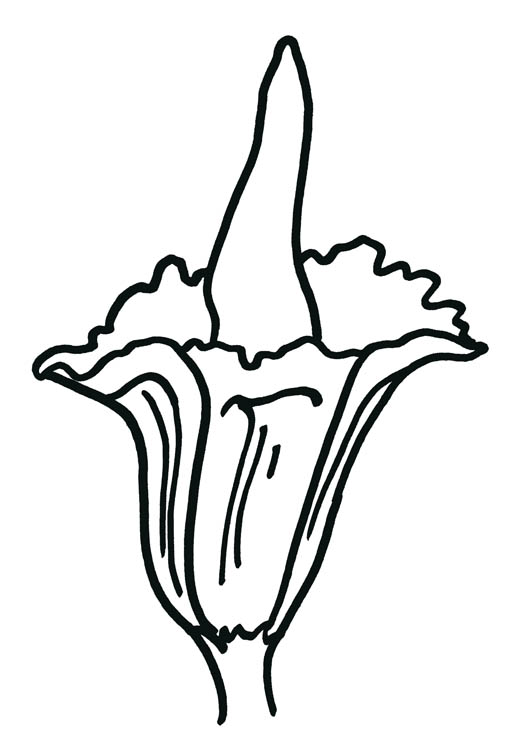
Another noteworthy flowering plant is Rafflesia, a parasitic flower native to Indonesia and Malaysia that feeds on the liana vine and grows from a sprouting body bud into a huge flower over the course of five years. Its flowers, once finally formed, can grow to almost a meter across and resembles something out of a horror film. These too smell of death and decay to attract flies in order to cross-pollinate. You can learn more about these unusual plants on this video from Real Science here.
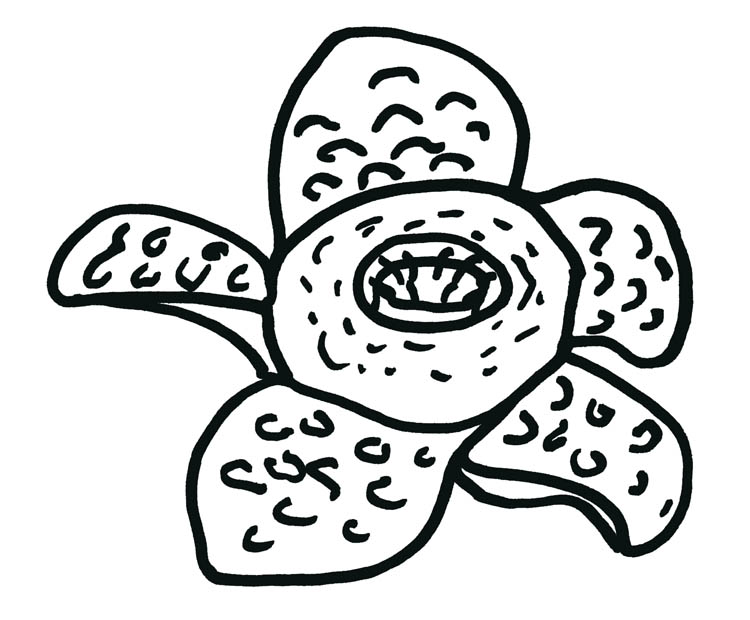
If you’ve enjoyed this segment of Nightmarish Nature, feel free to check out some previous here:
So, as you may have noticed, we have a special fondness for spiders here on Nightmarish Nature. Well, they are kind of the spokes-critters for horrifying animalia, perhaps because they are so freakishly different from us. Or maybe it’s because I find them a little disconcerting for all that I try to take the “you mind your business, I’ll mind mine” approach, at least if they stay outdoors. Or just because I really like to draw spiders for all that I prefer not to find them sharing my home (though I’ll gladly take spiders over other bugs or mice or larger critters who didn’t get an invite).
Anyway, this segment is devoted to the largest Giants Among Spiders, as if you didn’t have enough to worry about already. And the top place is contested based upon body mass or leg length. Most of these are tarantulas, which globally take top place among the large arachnids.
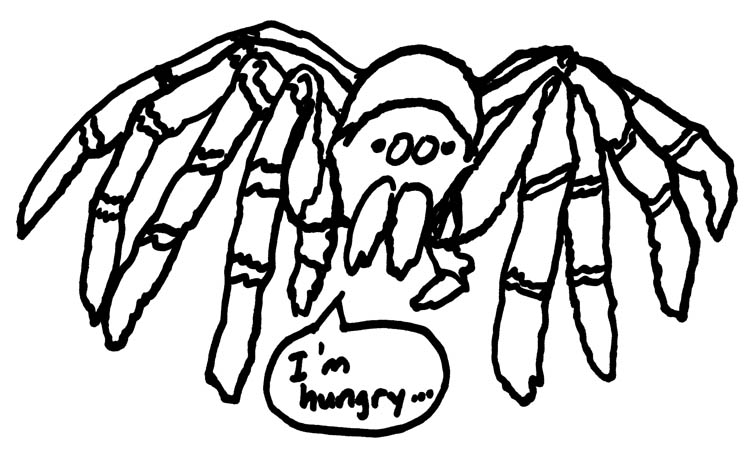
Goliath Birdeater Tarantula
The Goliath Birdeater Tarantula of South America is the biggest brute of spiderdom, weighing in at over 6 ounces. They build funnel burrows and are known to eat birds (although rarely), mice, lizards, frogs, and snakes, but largely any big insects including other species of spiders. They have urticating barbed hairs that they fling at would-be attackers as an irritant to escape. And people even eat them after they singe the bristles off. Here’s a National Geographic video showing this spider in action, in case you wanted to see a giant spider take out a mouse.
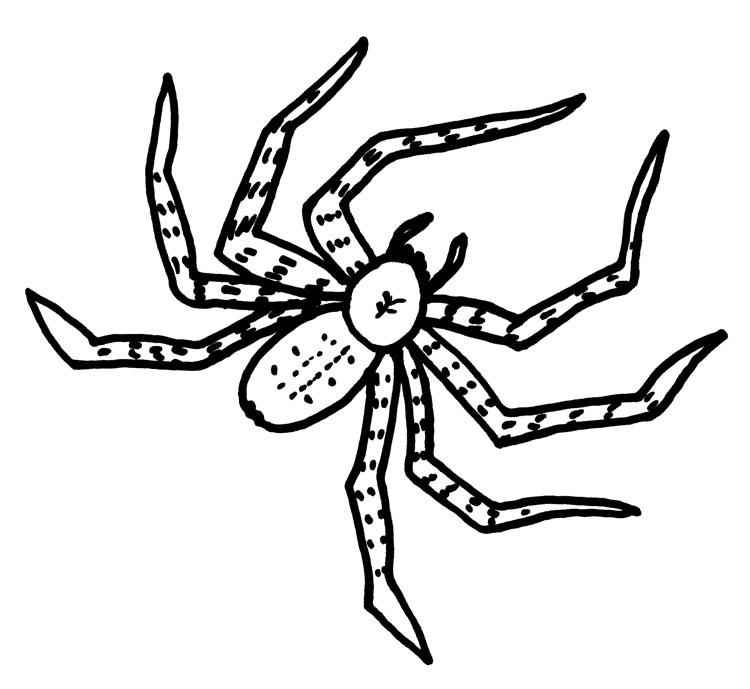
Giant Huntsman Spider
And with the longest legs, we have the Giant Huntsman Spider of Laos, with a leg-span of 12 inches. Their legs have twisted joints and they move in a crab-like manner, which furthers their impressive appearance. ‘Cause they’ve got legs, and know how to use ’em. They prefer to live in underbrush and cave entrances. These are like the big relatives of their Australian cousins, which we’ve all seen online and developed a healthy aversion to.
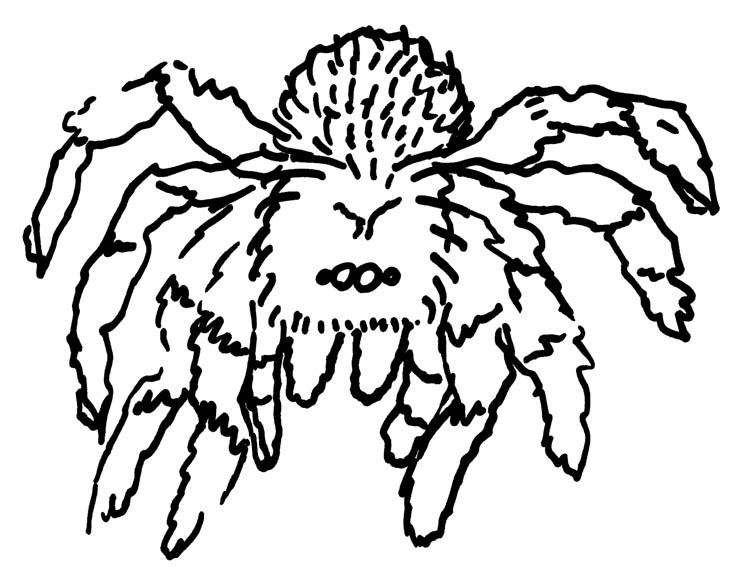
Brazilian Salmon Pink Birdeater & Brazilian Giant Tawny Red Tarantulas
Next we have two more South American species: the Brazilian Salmon Pink Birdeater, which boasts one-inch fangs, and the Brazilian Giant Tawny Red, believed to be the longest-lived spider with a lifespan of up to thirty years. Both are in the tarantula family and have urticating hairs, a word you probably never read much before today unless you are in the hobby. So apparently South America is not the best travel destination for you if you struggle with arachnophobia, though I suspect you’d figured that out already. (I wouldn’t recommend Australia or Southeast Asia either.)
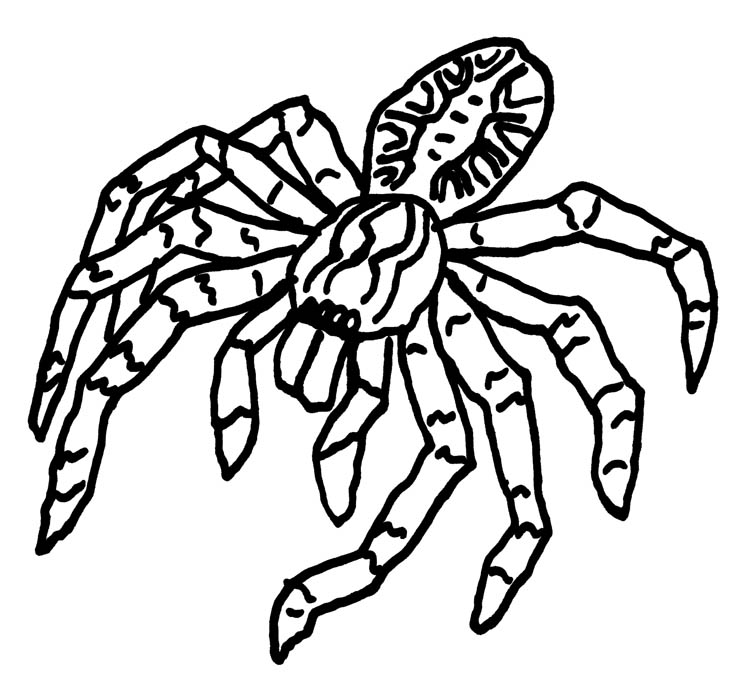
Face Size Tarantula
And finally the Face Size Tarantula, which has a very terror-inducing name reminiscent of the Face Huggers of Alien-glory. Anyway, these spiders have an 8-inch leg-span and live in India and Sri Lanka. They look kind of like big hairy wolf spiders with stripey legs, sometimes with pink and daffodil coloring.
If you enjoyed this eight-legged segment of Nightmarish Nature on Giants Among Spiders and their larger than life kin, please check out past segments:

